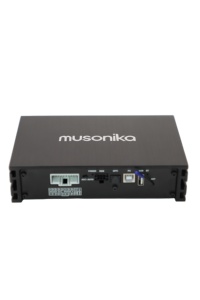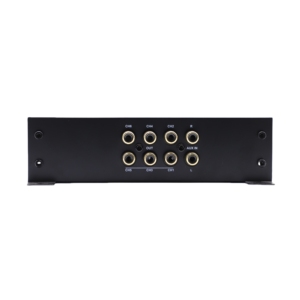
All categories
Featured selections
Trade Assurance
Buyer Central
Help Center
Get the app
Become a supplier

(202 products available)
































The SSB CB linear amplifier is a type of radio frequency amplifier that increases the power output of a Citizen Band radio. These compact, linear amplifiers are often available in various models that differ in terms of features, durability, and power output.
Liner to SSB
SSB is a Single Side Band Modulation technique. An SSB CB linear amplifier can amplify the power output of a CB radio that uses SSB. This kind of amplifier is specifically tailored to amplify SSB signals.
70W to 200W
CB radios can operate with 4 – 12 Watts on SSB and 1 – 5 Watts on AM/FM. Higher power radios/ internal amps may vary depending on the manufacturer. These internal power limits may be increased by Linear amplifiers, resulting in up to 200 Watts on SSB and up to 100 Watts on AM/FM. These amplifiers take the low power SSB, AM, or FM output from the transceiver and increase it for greater range. Modulation should remain crisp and clear at the higher power level, not compressed or distorted.
Power Amplifier
A power amplifier is an RF amplifier designed for high power and controlled voltage and current levels, as are found in transmitters and transmitters' loads. The output stage consists of bipolar transistors operating in Class AB and can be integrated into a monolithic structure with associated functions.
Driver Amplifier
A driver amplifier is an RF amplifier designed for high frequency, low voltage, and current levels. It typically comes before the power stage in a transmitter/driver load to ensure that the next stage's input signal exceeds the minimum requirement for linear operation at the maximum output level.
QRP or Medium Power
Medium power is also known as QRP. However, it is referred to as QRP when purposefully transmitting at reduced power output. Some prefer to call it low power, while others think reducing interference to others is the intention behind this practice. Medium Power seeks to improve range through effective antenna use or other means.
Linear Operation:
In an amplifier, linear operation means that the output signal should be directly proportional to the input signal at all power levels. This proportional relationship allows clear and accurate communication of the intended message by preserving its strength and quality. Achieving linearity is crucial for maintaining the fidelity of the modulated signal, which ensures that the signal is transmitted or recorded with the least possible distortion or degradation.
Improved Signal Strength
SSB or single sideband linear amplifiers are used to boost the range and clarity of SSB signals. SSB signals are a type of amplitude modulated (AM) waveform often used in shortwave radio and communications. The linear amplifier increases the signal without adding distortion or noise so that others can hear it clearly.
All linear amplifiers increase the power of an input signal to allow radio transmissions over greater distances. The amplifier takes a weak signal from a transmitter and boosts it so the signal can travel farther. These amplifiers have different power levels depending on how far someone wants to transmit their message. Low power amplifiers are sufficient for local communication, while high power models are used for long-range transmission. The key benefit of using any linear amplifier is improved signal strength and reduced background interference. This allows messages to be communicated clearly over longer distances without distortion or loss of quality.
Reliability and Safety
When buying an SSB amplifier for a radio, it's important to get one that is made well and can work for a long time without problems. The quality of the parts inside the amplifier and how well everything is put together will affect how reliable it is. If it is put together poorly or made with cheap parts, it may break down often and not last a long time. A reliable amplifier will be made with quality components and have a strong structure so that users can depend on it for years of use without needing to get it fixed.
It is also very important for amplifiers to operate safely. High power radio signals can cause interference with other devices if proper precautions are not taken. Amplifiers need to have good safety monitoring systems in place to prevent overheating or other dangerous conditions. Adequate training on how to operate the amplifier safely is also crucial for avoiding accidents that could harm people or equipment. Safety features like checking signal levels and temperature help systems stay within safe limits. Training users on safe operating procedures further ensures safety. When an amplifier has good safety oversight and users are taught how to operate it safely, the risk of harm to people or equipment is minimized.
Duty Cycle:
When using a linear amplifier for radio transmission, the duty cycle is very important. The duty cycle refers to how much time power is applied during transmission compared to the periods of rest in between. Amplitude modulation (AM) and single sideband (SSB) are two modulation techniques that can be used with linear amplifiers. The duty cycle affects how reliably and safely the amplifier can operate over time.
If the amplifier is used for AM with a low duty cycle, it means the amplifier can transmit for longer without overheating or damaging itself. Low duty cycle allows more cooling time in between transmissions. However, if the amplifier is used for SSB, which has a high duty cycle, it means the amplifier will need more cooling because SSB transmission uses more power consistently. High duty cycle transmissions put more stress on the amplifier. Operators should carefully monitor the amplifier if SSB is transmitted so that it does not overheat or get damaged. Understanding the duty cycle helps ensure reliable and safe transmission.
The SSB amplifier has many important applications, which include the following:
The applications of SSB amplifiers are not limited to the above. Many uses show that the device is helpful for communication over a wide area and where the signal strength and clarity need to be increased.
Bulk buyers of SSB CB amplifiers often have specific features and requirements they would like to be met in the devices. Hence, they must be carefully considered before making a purchase. Here are some important factors to consider when buying CB amplifiers.
Whether or not the amplifier is matched with the user's antenna system is an important factor to consider here. An amplifier that is not compatible with the antenna can create more problems rather than solving them. This is why it is important to know the antenna's feeding impedance before making a purchase.
The linearity of the amplifier is an important factor to consider. Linear amplifiers are more efficient than other types of amplifiers. They have a lower noise figure, produce less distortion, and are more manageable in dynamic range. They are also suitable for SSB transmission. Because SSB modulation produces narrow-band signals, the efficiency of the amplifier is critical.
The power output of the amplifier must be considered. The ideal amplifier will have enough power to drive the input of the transceiver to a suitable level. However, the gain must not be too much so that it drives the transceiver's output stage into distortion or cross-modulation.
The detail in the amplifier's construction and design ensures that signals are clear. Additional features like RF gain control, preamplifier, and automatic level control improve the quality of the signals being transmitted and received.
SWR protections and thermal protections amp minimize and maximize damage to the amp, respectively. SWR protection helps divert power away from the CB radio if the standing wave ratio becomes too high. This protects the amplifier from damage. On the other hand, thermal protection prevents the amplifier from overheating by shutting it down when the temperature gets too high.
Finally, it is important to consider the size and weight of the amplifier being purchased and whether it will be mounted inside the vehicle or on the outside. The features, such as weather resistance and size, will vary depending on whether it will be stored inside or outside the vehicle.
Q1: What duty cycle is typical for SSB amplifiers?
A1: Many linear amplifiers for single sideband (SSB) transmission aim for a duty cycle of around 20-30%. This allows sufficient cooling and minimizes potential damage to the amplifier.
Q2: What is the benefit of using a linear amplifier?
A2: A linear amplifier will provide the same linearity and fidelity to the signal as was present at the input. This is very important for SSB because the signal must maintain its clarity and quality.
Q3: How important is conditioning for an amplifier?
A3: Conditioning should be part of any good design. If the power supply cannot overcome voltage drops caused by current surges when an amplifier circuit is keyed, there is a potential for an amplifier to be damaged or not operate correctly.
Q4: What is the difference between class B and class C?
A4: Class B amplifiers are generally used in amplitude-modulated (AM) transmission, while Class C is used in frequency-modulated (FM) transmission. amplifiers can be used for SSB because they provide high efficiency and are capable of producing the power levels needed.
Q5: What is a solid-state amplifier?
A5: A solid-state amplifier uses transistors instead of vacuum tubes to increase the power of a signal. They are often used in radio transmitters and other electronic devices to boost the signal strength.